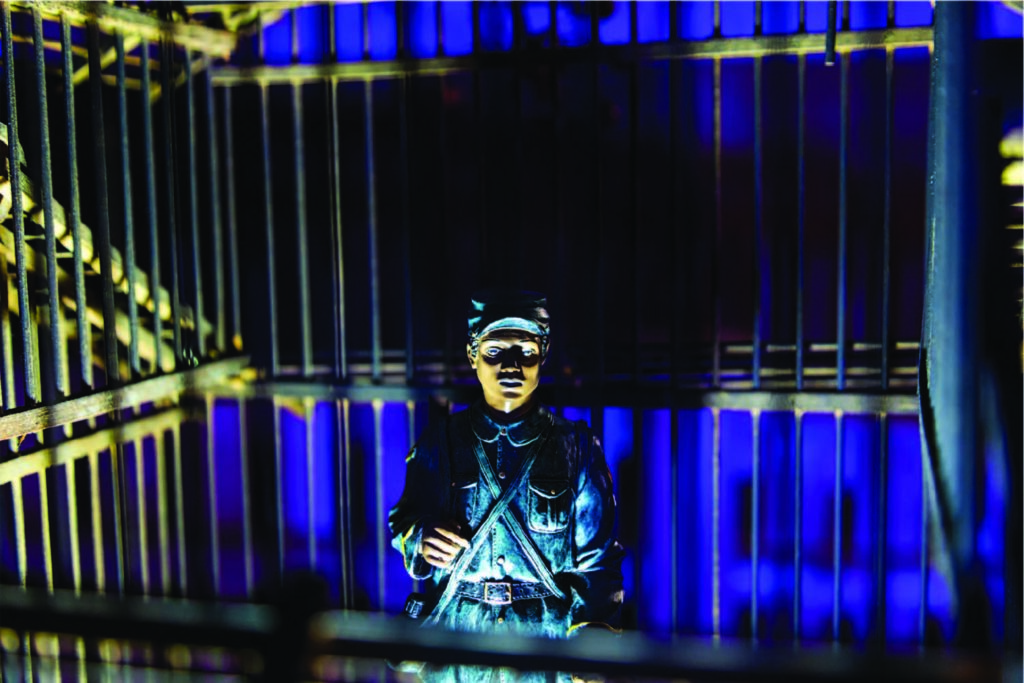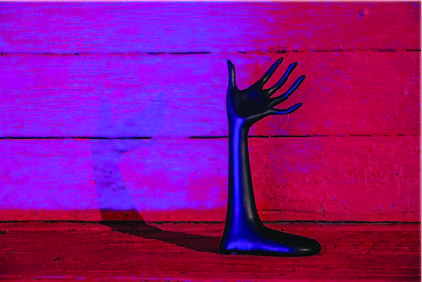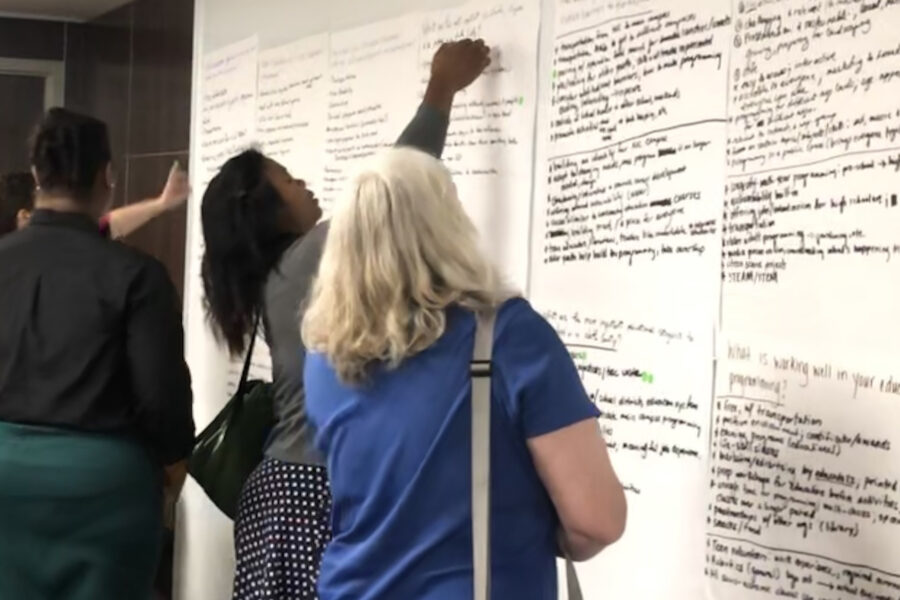In 2020, the writer and artist Asata Radcliffe ‘08 (Antioch Los Angeles, MFA in Creative Writing) created a “living installation” of a hurt that does not end. This haunting eulogy, titled “A Slower Ontology,” was told through fuchsia and purple light. It’s a story of an artist in words and in visuals, a mark of an artist who knows the power of history and memory—and knows answers are rarely given to difficult questions.
“A Slower Ontology” was located at, and reimagines, the home of Abraham and Harriet Niles in Portland, Maine. (View images of the installation at asataradcliffe.com.) The Niles had eleven children, and Racdliffe’s artwork focuses on the family’s mourning for several siblings who died while very young and for three brothers who fought in the Civil War, in the Battle of Crater. These young men, John, Benjamin, and Henry Niles, represent Black soldiers who were recruited to fight only to be massacred by Confederate soldiers when they tried to surrender.

In Radcliffe’s piece, mouths and eyes are lit open from the ground, backed by mournful veils of fuchsia and purple (which can appear blue and red in photographs). These colors are to “assuage the grief of the eulogized,” and not that of the viewer, explains Radcliffe. “The entire piece is about death and mourning,” she says, “a eulogy for the entire family.”
As part of a larger public art and Portland history-telling initiative called Re-Site, “A Slower Ontology” was purposely not in a gallery. Instead, it was meant to engage any walker who passed by it on the street. This free access was important to Radcliffe, as galleries require a certain level of privilege to enter.
Though Radcliffe studied fiction during her MFA at Antioch Los Angeles, she does not see her turn to visual art as a separation from her writer-self. Instead, her visual art is another attempt to make sense of those questions we need to understand, such as the issues that surround the Niles family.
As a storyteller, Radcliffe looks beyond the pages and asks the necessary questions. Lately, she explains, her visual arts are shifting into “more speculative narratives that connect to my fiction writing” as they require asking questions of the culture around her. With a writer’s eye, Radcliffe wrestles with difficult questions, the questions that haunt her, and transforms them into stories that engage the viewer. The result is the sound of memory—the past, the present,
and the future, colliding in one space.




